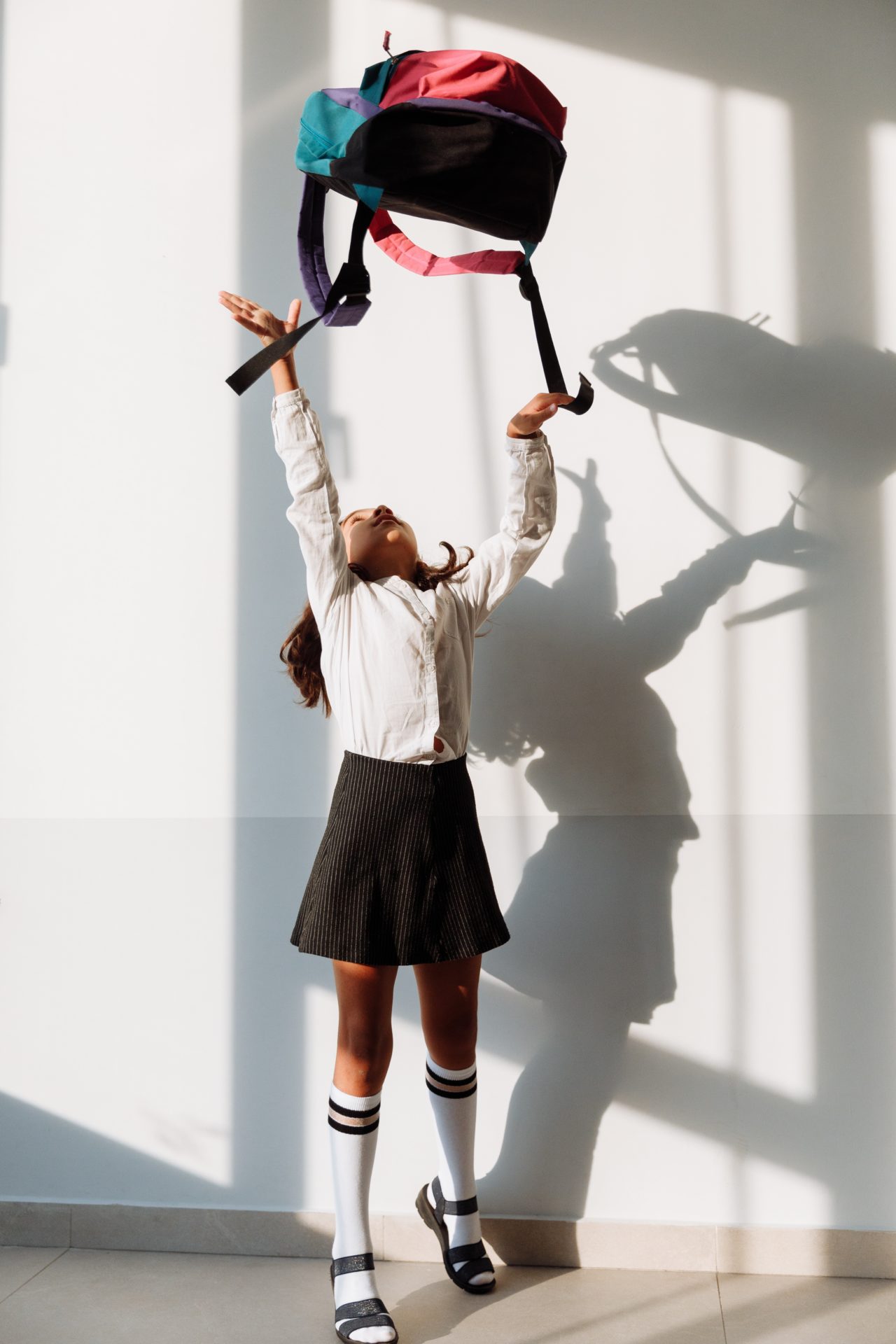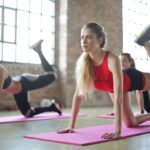Did you know that improper school bag use is a leading cause of back pain in children?
When used properly, a school bag is an invaluable tool. But oftentimes, school bags are used improperly which can lead to all sorts of issues for your child.
What’s the problem with school bags?
Kids load their backpacks full of books, binders, folders, notebooks, homework, pencils, pens, art supplies, lunches, snacks, extra clothes, and whatever else they can find.
As they get older and move into middle and high school, the packs often get heavier. In many cases, older kids are wearing their backpacks throughout the day between classes. With only a few minutes between classes and not enough time to stop by their locker, they are often lugging heavy books and binders around all day.
Heavy back packs can cause the body to lean forward. This posture causes rounding of the upper back and forward head posture. For every inch the head shifts forward, the effective weight of the head increases by about 10 pounds, causing increased stress on the muscles and ligaments that support the head throughout the spine from the neck all the way down to the low back. This posture is also associated with headaches.
These effects can also be felt in the extremities. Shoulders may become sore from the straps and knees and feet may hurt from altered walking patterns caused by these postural changes.
What can you do about it?
There are many factors to take into consideration when fitting and loading a school bag for your child.
Here are 4 factors to consider when assessing your child’s school bag:
- Material: Backpacks for kids should be made of lighter weight material than backpacks for adults.
- Size: The backpack should be the proper size for your child. The length should be about the length of the torso with the top about 2 inches below the shoulder and bottom of the bag about two inches below the waist. The width of the bag should not exceed the width of the child’s torso. The pack should also fit snug against the body, minimizing the space between the pack and the back.
- Weight: Backpacks should not exceed 10-15% of the child’s body weight depending on their age. Try to keep the pack closer to 10% for younger kids while older kids may be able to tolerate closer to 15%. Backpack contents should be evenly distributed with heavier things packed lower and closer to the body.
- Support: Backpacks shoulder have wide, padded shoulder straps and a waist strap which are more comfortable and help distribute the weight more evenly. The straps should all be adjustable to conform to your child’s size. Backpacks should be worn symmetrically on both shoulders, so weight is supported evenly. Wearing the pack on one shoulder will cause the child to lean to one side and effect that side disproportionately.
If your child has developed health problems as a result of improper backpack use, or if you’re just trying to prevent any issues before they occur, we can help. Click here to schedule a consult when you’re ready to get started with addressing any core problems that may be interfering with your child’s health and contributing to their backpack-related symptoms.
To read more about backpack safety, click here.
Dr. Derek Gallant
Dr. Derek Gallant has committed himself to helping others live the best life possible. After graduating from Wesleyan University, he received his Doctor of Chiropractic Degree from Life Chiropractic College West where he finished 2nd in his class. He is the owner of Beverly Family Chiropractic and co-founder of The Well Family Foundation. Dr. Gallant is certified through the International Chiropractic Pediatric Association (ICPA) in the Webster technique, an analysis focused on assisting pregnant women in a healthy pregnancy and natural birth. He has inspired thousands of people to take control of their own health using the Life By Design method. Apart from full time practice you can find Derek at the parks and coffee shops around Beverly with his family, training hard at the gym, or at the beach surfing.








